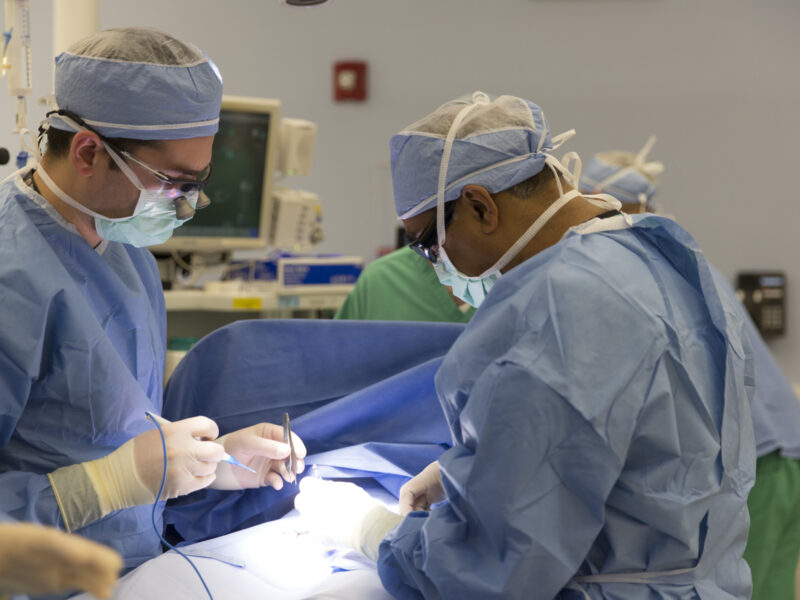Postoperative Management of Flexor Tendon Injuries in Children
Postoperative Management of Flexor Tendon Injuries in Children https://pediatricsnationwide.org/wp-content/themes/corpus/images/empty/thumbnail.jpg 150 150 Mary Bates, PhD Mary Bates, PhD https://secure.gravatar.com/avatar/c6233ca2b7754ab7c4c820e14eb518c8?s=96&d=mm&r=g- February 16, 2022
- Mary Bates, PhD
One month of immobilization followed by a modified Duran protocol leads to good outcomes.
Pediatric flexor tendon injuries can be challenging due to children’s smaller anatomy and possible treatment nonadherence. In adults, immediate to early active motion for flexor tendon repairs has become standard, as prolonged postoperative immobilization can lead to adhesion formation and joint stiffness. However, there is no consensus for the optimal rehabilitation protocol for young children with these injuries.
“There is a balance between protecting kids from breaking their sutures and avoiding stiffness and adhesion formation,” says Julie Samora, MD, PhD, MPH, an orthopaedic hand surgeon at Nationwide Children’s.
Dr. Samora led a recent study to investigate the outcomes of primary pediatric flexor tendon repairs at Nationwide Children’s. The study included 28 patients ranging from preschool age to teenagers. All patients underwent three to four weeks of immobilization followed by a modified Duran rehabilitation protocol that included early passive motion in the confines of a dorsal blocking splint prior to initiating active motion.
The results showed that, overall, children with flexor tendon injuries who underwent one month of immobilization followed by a modified Duran protocol experienced favorable outcomes. Children with delayed surgery (occurring more than three weeks after injury) who underwent primary repair generally still achieved good outcomes but were more likely to have residual stiffness.
“This study confirms that what we are doing at Nationwide Children’s is a good option for patients,” says Dr. Samora, who is also one of the hospital’s medical directors for safety, and the surgical services director for diversity, equity, and inclusion. “This protocol is safe and results in good function, though we can always learn from more research.”
Dr. Samora says that even within this protocol, there is room for clinicians to treat patients as individuals. Surgeon preferences result in a mix of different surgical techniques for repair, and the form of immobilization varies based on patient and surgeon preference. In addition, the exact rehabilitation protocol is individualized to the patient.
Further studies of the modified Duran protocol following flexor tendon repair could focus on the best options for different ages of patients or zones of injury and may better evaluate the various repair techniques performed.
“The more we understand about tendon repairs and the post-operative protocols, the better the outcomes for our patients,” says Dr. Samora.
Reference:
Lin JS, Balch Samora J. Functional outcomes of a modified Duran postoperative rehabilitation protocol after primary repairs of pediatric hand flexor tendon injuries. J Pediatr Orthop B. 2021 Dec 11. doi: 10.1097/BPB.0000000000000944. Epub ahead of print.
About the author
Mary a freelance science writer and blogger based in Boston. Her favorite topics include biology, psychology, neuroscience, ecology, and animal behavior. She has a BA in Biology-Psychology with a minor in English from Skidmore College in Saratoga Springs, NY, and a PhD from Brown University, where she researched bat echolocation and bullfrog chorusing.
-
Mary Bates, PhDhttps://pediatricsnationwide.org/author/mary-bates-phd/December 27, 2016
-
Mary Bates, PhDhttps://pediatricsnationwide.org/author/mary-bates-phd/
-
Mary Bates, PhDhttps://pediatricsnationwide.org/author/mary-bates-phd/
-
Mary Bates, PhDhttps://pediatricsnationwide.org/author/mary-bates-phd/
- Post Tags:
- Orthopedics
- Surgery
- Posted In:
- Clinical Updates
- In Brief
- Research






